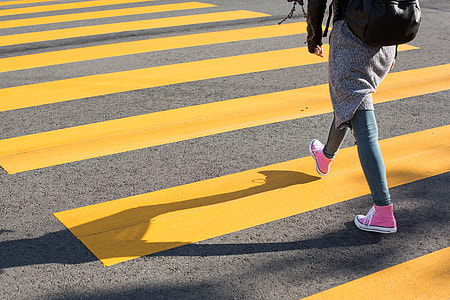Safely Navigating Pedestrian Rights and Responsibilities
| Driver Education |
In the realm of California roadways, our streets serve as shared spaces, bustling with vehicles and pedestrians. To preserve safety and harmony, the California Vehicle Code (CVC) lays down clear rules governing the rights and obligations of pedestrians. In this guide, we will delve into the CVC regulations, illuminating the roles of both pedestrians and drivers. Let’s explore the essential facets of pedestrian rights and responsibilities, essential for the secure traversal of our streets.
This blog may contain affiliate links, and if you make a purchase through these links, we may or may not earn a commission at no extra cost to you.
Understanding Pedestrian Rights
Right of Way at Crosswalk (21950 CVC): Pedestrians have the right of way at crosswalks, whether marked or unmarked. Drivers must yield to pedestrians crossing within these designated areas.
Vehicles Stopped for Pedestrians (21951 CVC): Vehicles must come to a complete stop when pedestrians are crossing the road at marked or unmarked crosswalks to ensure their safety.
Right of Way on Sidewalk (21952 CVC): Pedestrians on sidewalks hold the right of way. Drivers approaching intersections or driveways must yield to pedestrians on sidewalks.
Tunnel or Overhead Crossing (21953 CVC): Pedestrians using tunnels or overhead crossings have the right of way. Drivers should exercise caution and adhere to rules to ensure pedestrian safety.
Understanding Pedestrian Duties
Crossing at Other than Crosswalk (21954 CVC): Pedestrians must exercise caution when crossing the road at locations other than marked crosswalks. They should yield to vehicles unless it is safe to cross.
Crossing Between Controlled Intersections (21955 CVC): When crossing between controlled intersections, pedestrians must obey traffic signals and signs to prevent accidents.
Pedestrian on Roadway (21956 CVC): Pedestrians walking on roadways without sidewalks should walk on the left side, facing oncoming traffic to ensure safety and awareness for both pedestrians and drivers.
Hitchhiking (21957 CVC): Pedestrians engaging in hitchhiking should do so safely, following designated areas and regulations without obstructing traffic.
Skiing and Tobogganing on Roadway (21959 CVC): When using roadways for skiing or tobogganing, pedestrians must take precautions to ensure their safety and avoid disrupting traffic flow.
Freeways (21960 CVC): Pedestrians should never walk on freeways or enter areas restricted to vehicles due to the high-speed nature of these roads.
Local authorities can establish specific pedestrian regulations within their jurisdictions, provided they align with state law (21961 CVC). Pedestrians must be aware of these rules to ensure their safety while walking on our streets.
In conclusion, understanding pedestrian rights and responsibilities is vital for pedestrians and drivers alike. Adhering to these regulations fosters safety and harmony on our roadways. Whether you’re crossing at a crosswalk or walking on a sidewalk, knowing your role as a pedestrian contributes to the well-being of everyone sharing our streets. Stay informed, stay safe, and let’s navigate our streets responsibly together.
Drive with Confidence!
Keep up with all the latest driving news. Expolre our blog packed with essential tips and expert advice on all things related to DRIVING!




